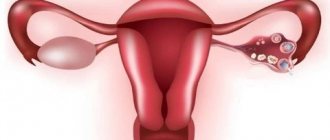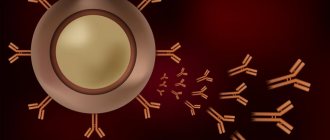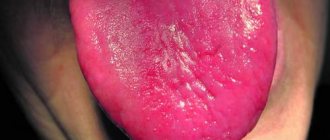Peculiarities
Schizophrenia in women goes through several stages of development, corresponding to the standard stages of the disorder:
- elementary;
- progression of symptoms;
- personality disintegration.
The onset of the female form of the disease is characterized by a blurred clinical picture. Often the initial period is almost asymptomatic.
Initial symptoms of schizophrenia in women may include:
- increased irritability;
- emotional instability;
- confusion;
- inattention;
- sloppiness;
- lack of composure.
This corresponds to the general signs of the disorder inherent in all age and gender categories of patients.
Emotional coldness gradually increases in patients. In females, the decline in expressiveness of emotions is easier to recognize. A caring, attentive mother suddenly stops paying attention to her child. Total indifference appears. Infants who require constant care are especially affected.
The woman stops preparing food, caring for children, and performing daily duties. Forgets to pick up the baby from kindergarten. When the baby approaches his mother and asks to play with him, the patient indifferently refuses, the child’s tears and persuasion are useless.
The mother is indifferent to school performance, forgets to ask whether her child is fed or how he is dressed. This sign is a fairly indicative symptom of the disorder. The sharp contrast in the patient’s behavior should alert loved ones.
A woman's emotions and facial expressions are limited. The voice is quiet, monotonous. It is difficult for her to construct a speech correctly, it is difficult for her to find the right words. She stops mid-sentence. Often, representatives of the fair sex freeze in one position, spending an impressive part of the day in this way.
The patient is not aware of changes in her own behavior. Considers him normal. He responds to questions about his well-being with aggression. Denies problems. Refuses to accept help. Refuses to see a doctor.
Emotional changes can cause eating disorders. Characterized by bulimia and anorexia.
The opposite of apathy and indifference is pathological cleanliness. The owner is obsessed with cleanliness. He spends his days cleaning. A small speck forces you to start a total cleanup all over again. Such actions can take the form of rituals. If the “clean spitter” fails to perform the next ritual, she becomes irritable and angry.
Side effect of speech
It is unknown who our distant ancestor was who was the first to develop schizophrenia. But there is reason to believe that he had a good command of stone tools, wrapped himself in skins while sitting by the fire on cold evenings, and was just mastering the fine arts. This is indicated by the hypothesis of the origin of the disease put forward by the English psychiatrist Timothy Crowe. He suggested that the emergence of schizophrenia is directly related to the emergence of language.
Anthropologists call the appearance of speech in humans a genetic “event”; its significance is truly difficult to overestimate - language separated us from all other species of animals. The chromosomal changes that caused its appearance caused an asymmetry in the development of the hemispheres - the left became responsible for the analysis and “assembly” of speech, for syntax and morphology, and the right - mainly for semantic content. Crowe's idea boils down to the fact that the asymmetry of the hemispheres became the cause of schizophrenia. The hypothesis, of course, has its evidence - in patients with this diagnosis, the asymmetry of the hemispheres is actually less pronounced, which also causes speech disorders.
The “independent life” of the hemispheres began approximately 100-250 thousand years ago, at the height of the Paleolithic era, when our ancestors learned to draw the first ornaments on the walls of their caves, and, according to Crowe, the first patients with schizophrenia appeared in those distant, distant times.
However, Crowe's hypothesis is not the only one. One of his most passionate opponents is Jonathan Kenneth Burns, author of the evolutionary theory of schizophrenia. According to her, the disease is not associated with language at all, but with the development of a person’s cognitive abilities and social skills. However, the “date of birth” of the disease in this case will not fundamentally change.
It must be said that the reasoning above is nothing more than speculation - the Rhodesian man, the hero of the Middle Paleolithic, alas, did not leave behind a list of his illnesses. But the ancient Egyptians already mentioned in their documents symptoms reminiscent of schizophrenia.
However, the very name of this very old disease appeared relatively recently - in 1908, thanks to the Swiss doctor Eugen Bleuler. He considered the main symptom of schizophrenia to be ambivalence - duality of experiences and attitudes towards something. A split or division in ancient Greek is called schizis, hence the term schizophrenia (in English it sounds closer to the original).
Do you want to live in harmony with your body and not feel like a night owl in a world of early risers? We'll tell you how to do this in a practical course on biohacking.
Hysteria and disorientation
The onset of the disease is often marked by psychopathic-like manifestations. The woman's emotional background becomes unstable. A mannerism and affectation of behavior appears. The patient acts feignedly. She is overly talkative, flirts, laughs loudly and inappropriately, and tries by any means to attract the attention of others.
Hysteroid reactions are characteristic, accompanied by:
- increased tearfulness;
- whims;
- causeless sobs;
- scandals, screams;
- seizures.
Excessive sexual liberation and aggressive behavior are observed.
Zinaida, 35 years old. Having a young daughter, she did not hesitate to bring home lovers much older than herself. She organized orgies in the presence of a girl. She was often excited. She shouted at her daughter, assaulted her, and threw dishes at her. With age, sex drive decreased. She lived with her husband. She was characterized by despotic behavior, humiliated the man in every possible way, pushed her around, and showed verbal aggression.
Hysteria subsequently takes on rough, severe forms. Accompanied by confusion, excitement or stupor, the appearance of fantastic visions and voices.
Signs of schizophrenia in women also include depersonalization phenomena. The patient, looking in the mirror, does not recognize herself. Attributes his own reflection to a stranger. The body or its individual parts seem foreign. A feeling of self-rejection is born. There is inexplicable anxiety and a feeling of discomfort.
There is a feeling of a change in the internal state. Patients are concerned about the limitations of their intellect, their mental activity loses flexibility and vitality. They perceive what is happening around them as outside observers.
A characteristic sign of the disorder is loss of self-control. A woman attributes control over her own thoughts, emotions, and actions to strangers and superpowers.
Females suffering from schizophrenia can show signs of megalomania and become arrogant. They treat others with disdain. They have high self-esteem. They reject the possibility that their own judgments are wrong.
Diagnostic criteria
The requirement for a diagnosis of paranoid schizophrenia is the presence of at least 1 clear manifestation or 2 subtle manifestations from the following group:
- statements about putting in or taking away thoughts;
- delusional beliefs that relate to motor activity, sensations, or actions;
- hallucinations of an audio nature - usually a voice commenting on the patient’s behavior or discussing his actions;
- persistent overvalued delusional ideas - beliefs in superpowers, communication with alien beings, etc.
To make a diagnosis, the following list of symptoms is also used, of which at least 2 manifestations must be present:
- overvalued beliefs that arise every day for a week or month, hallucinatory phenomena of any type;
- disruption of speech and thought processes;
- catatonic syndrome, overexcitation or freezing, stupor;
- symptoms of the negative subgroup - apathy, poor speech, inadequate emotional reactions, problems in social adaptation (signs should not be caused by depression or treatment with antipsychotics);
- behavioral disorders, loss of interests, non-targeted actions, self-absorption like autism.
In many types of schizophrenia, symptoms persist for at least 30 days. To be diagnosed with f25 episodic schizoaffective disorder, a patient must have at least one of the following symptoms for 14 days:
- audio hallucinations;
- delusions of control or influence;
- beliefs about telepathy - a person indicates the reception or transmission of a thought process;
- speech is broken, there are neologisms;
- there are delusional ideas that are not characteristic of any subculture of the patient;
- catatonic type symptoms.
During the diagnostic process, symptoms of a mood disorder must be present. The diagnosis is established if a person does not have organic disorders in the functioning of the brain.
Clinical manifestations
Additional symptoms are divided into positive and negative. Positive psychopathological syndromes:
- Asthenic - weakness, increased fatigue, lethargy.
- Psychopathic-like - increased affective lability, increased sensitivity and excitability, hypomanic behavior, overvalued formations.
- Affective - daily sharp mood swings, depression or mania, oneiroid.
- Hallucinatory - hallucinations, voices in the head, pseudohallucinations.
- Delusional - sensual delirium, paranoia, Kandinsky-Clerambault syndrome.
- Catatonic is a pathology that includes decreased (state of stupor) or increased (excitement) psychomotor activity.
Negative psychopathological syndromes:
- Autism is social isolation, inability to experience empathy, lack of spiritual connection with people and lack of interest in social life.
- A reduction in energy potential or a drop in mental activity - lack of productivity, difficulties in using existing knowledge, problems with the mobility of mental processes.
- Emotional changes - impoverishment of emotional reactions, lack of clear differentiation of emotions.
- The phenomena of drift are increasing passivity, the impossibility of building a “life line.” Patients give an analogy of their life to a “boat” that is sailing in an unknown direction.
- Thinking disorders/speech features - thinking is not purposeful, there is no sequence of thoughts and speech, there is no logic. Thinking is fragmented. Sometimes there is an “influx of ideas”, the content of which is difficult for the patient to articulate.
Dementia of the schizophrenic type is a separate negative syndrome. It occurs at the final stage of schizophrenia. To identify it, tests are used to assess cognitive abilities.
With dementia, there is a significant drop in intelligence. The “core of personality” is destroyed. There is a gross violation of the higher intellectual functions involved in the formation of judgments and conclusions. The patient is not able to adequately comprehend what is happening. He does not know how to apply concepts correctly. His thinking cannot analyze, synthesize, generalize information. Stereotyped statements are noticeable in speech. The stock of knowledge and skills suffers.
It is worth addressing the issue of the appearance of a person with schizophrenia. Patients often neglect hygiene and personal care. This is noticeable in sloppy, wrinkled clothes. The facial expression and gaze are sad, wary or “radiant.” Facial expressions are poor or inappropriate to the situation. In schizotypal disorder, patients' appearance is described as “eccentric,” ostentatious, or strange. Facial expressions are meager and restrained.
Important signs of schizophrenia
Quite often, the onset of the female form of the disorder is marked by hypochondriacal signs: the weaker sex is overly concerned about their own health.
Initially, hypochondria is non-delusional in nature. Ladies are obsessed with the idea of having a serious illness, a fatal infection. They tirelessly visit all kinds of doctors. They reject confirmation by doctors of their own physical well-being and strive for a comprehensive examination.
Patients complain of muscle weakness and spasms, emptiness in the body, and a feeling of failure or floating. They experience dizziness, the head becomes “heavy”, “the back of the head is pulled.” Concerned about unsteadiness of gait. Disturbing symptoms become the center of attention, the patient hypertrophies. Patients use exaggerated comparisons. For example: the headache is unbearable, stronger than labor pains, I have never experienced such torment.
The ladies' consciousness is completely absorbed by disturbing sensations. The behavior of a woman, shrouded in her own experiences, undergoes changes. The lady, fearing a sudden deterioration in her condition, takes precautions. So, while going to the shower, he takes out his mobile phone to immediately call for help. He comes up with protective amulets and carries them with him everywhere. Gets rid of things that, in the woman’s opinion, caused the disease.
Patients strive to protect their own health. They give up their old lifestyle, give up bad habits. They adhere to therapeutic diets, use physiotherapeutic treatment procedures: swim in an ice hole, do yoga, take a contrast shower. Perform heavy physical activity.
The woman is fully covered by the health system. Evaluates environmental factors taking into account exclusively the “dangerous-safe” principle. Security procedures are exaggerated, pretentious in nature: they put on a protective mask when going outside, avoid large crowds of people, beware of visiting unfamiliar premises, fearing “smoky” spaces.
At the same time, patients refuse the services of traditional medicine and turn to non-traditional methods of treatment: they use medicinal herbs and use the help of healers. Self-medication is used. The cat is placed on the projection of the painful organ. Cast out evil spirits. They make dolls and use rituals to transfer their own ailments to them. They hug tree trunks.
Gradually, non-delusional hypochondria gives way to the delusional form. Tactile hallucinations develop. Patients come up with perverted characteristics of disturbing sensations. They report worms wandering through the body, a blazing fire inside the abdomen, insects living in the skull.
The next hallmark of a woman suffering from schizophrenia is a change in behavior. Representatives of the fairer sex stop caring about their own appearance. Hair takes on an unkempt appearance. Clothes are dirty and torn. There is an unpleasant odor. Dresses vulgarly, wears bright makeup, or completely stops using cosmetics.
Depression is a common symptom of female schizophrenia. Painful anesthesia is observed - dullness of feelings, emotional poverty, loss of the ability to receive pleasure. Patients call themselves dull, hardened, and lacking emotional sensitivity.
How to treat illness
Patients treat their condition without the proper amount of criticism, and therefore refuse to be treated. In addition, in a state of psychosis, they can pose a danger to themselves and loved ones. Most often, patients are brought to a psychiatrist by relatives; they are the ones who must help the patient in a difficult situation. Most often, in the acute phase of the disease, inpatient treatment is required to return the patient to an adequate state, when the woman could work and take part in family affairs. If hospitalization is not possible, then relatives should carefully ensure that medications are taken regularly, since the person’s return to normal life depends on them.
Constantly taking antipsychotic medications and regularly visiting your doctor can prevent exacerbation of the disease in a timely manner.
Diagnostics
To establish an accurate diagnosis, the patient must be regularly monitored for 2-4 months. At this time, the doctor collects an anamnesis of the disease, identifies the general clinical picture, and differentiates the type of schizophrenia. To clarify the diagnosis, neurotests and neuropsychological systems are additionally used. In each specific case, the psychiatrist selects treatment , depending on the individual characteristics of schizophrenia, its form and symptoms, which come to the fore.
Condition after childbirth
Certain changes occur in a young body after childbirth. Therefore, girls of this age who have given birth may be subject to varying degrees of development of schizophrenia if they have a predisposition to it. After giving birth, women may develop schizophrenia due to severe stress that affects their physical and psychological state. But this is an extremely rare occurrence. The following factors can lead to the development of schizophrenia after childbirth:
- loneliness;
- depressed state;
- postpartum depression;
- hereditary predisposition to the disease;
- lack of communication with other people.
A mental disorder in a woman who has given birth to a child is difficult to ignore. It is characterized by pronounced symptoms, which are not typical for a healthy person. The woman refuses to accept her child and fulfill new responsibilities. During this period, pathological delirium is often observed in patients.
After the symptoms of schizophrenia subside, women are left with a feeling of alienation towards their own baby. To cope with unpleasant symptoms and disease, a woman will need to undergo a course of drug therapy. Close people should help her in every possible way to achieve recovery. If they begin to pull away, the patient’s condition will worsen significantly.










